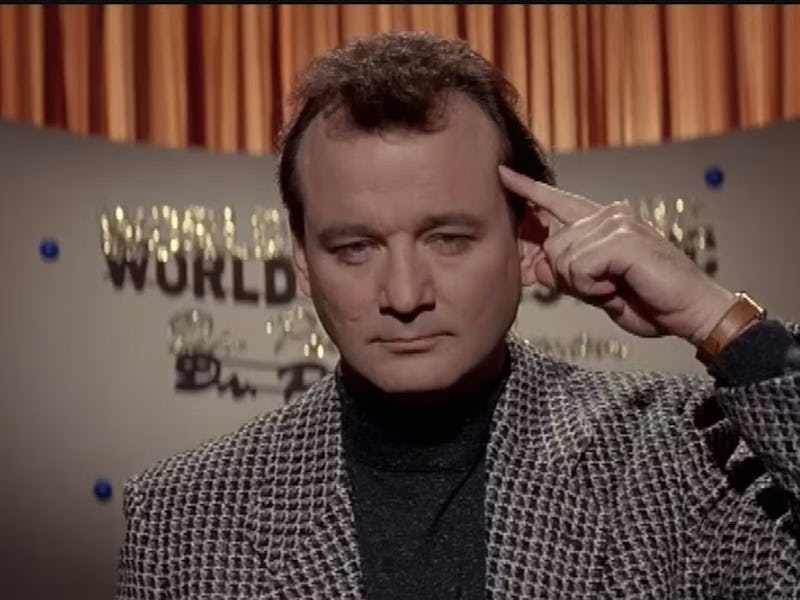Once Upon a Time, Ghostbusters Expanded With a Misunderstood Masterpiece
Let’s get deep into the slime.

If the concept of mood slime existed in any movie other than 1989’s Ghostbusters II, it would be considered one of science fiction's most clever and compact conceits. If Douglas Adams had lifted the movie’s basic plot structure it would be quoted on bumper stickers. And yet the world-building notion that ectoplasm — the residue left by ghosts — can be weaponized for good or ill by our emotions simply isn’t treated with the reverence it should be, nor are the several other innovations introduced in Ghostbusters II.
The sequel to 1984’s Ghostbusters was and is generally viewed as a less-than-stellar follow-up to a nearly perfect film. But while it’s fair to say Ghostbusters II is a less pure piece of art than Ghostbusters, that doesn’t mean Ghostbusters II is bad. For three decades, this sequel has been bad-mouthed so much that you have to wonder if people have bothered to actually watch it. Ghostbusters II may be inferior to its predecessor, but it’s still a misunderstood comedic sci-fi masterpiece.
Set a few years after the first film, Ghostbusters II finds the busters disgraced and broke. It turns out that defeating Gozer saw them hailed as heroes for about two seconds, after which they were quickly destroyed by a mountain of bureaucracy and a wave of apathy from the general public. Criticism of the movie’s believability often begins with this plot point: how could the world forget the Ghostbusters? But the 21st century has been teeming with crackpot conspiracy theorists arguing that various terror attacks did not, in fact, take place. It’s not that much of a stretch to imagine that, if a massive Marshmallow Man really ravaged Manhattan, there would be a strong push from some circles to claim it never happened at all.
Regardless, putting the Ghostbusters behind the eight ball means the movie's first half is a comeback story. Not only do the boys have to investigate the mysterious slime that’s been bothering Dana, but they could get arrested just for engaging in Ghostbusterly activities, although this tension vanishes after Manhattan is once again beset with tons of ghosts.
Aesthetically, Ghostbusters II is more colorful than its predecessor, an influence clearly drawn from the popular 1986 cartoon The Real Ghostbusters. Janine’s bright red hair makes her look like her cartoon self, while Winston is clean-shaven to match the show. The busters even get an alternate version of their uniforms. These small details may mean nothing to casual viewers, but for kids in 1989, these shout-outs were everything.
Ultimately, a painting didn’t make for the most compelling villain.
With mood slime, underdog Ghostbusters, a colorful visual palette, and an ending where the Statue of Liberty walks heroically through New York City, one might wonder why Ghostbusters II also needed a proper big bad in the form of a sentient painting, Vigo the Carpathian. A haunted painting isn’t the franchise’s greatest concept, and it feels less-than-novel compared to the grotesque brilliance of Ghostbuster’s Zuul. But Ghostbusters II doesn’t even need Vigo to make the plot work; the river of slime underneath the city is the true plot driver. Vigo’s just taking advantage of it, which unfortunately makes vanquishing him somewhat anti-climactic.
But along the way, Ghostbusters II delivered more hilarious moments than the three newer films combined. Venkman’s “World of the Physic” TV show feels like it belongs in a Wes Anderson movie. The courtroom scene, in which the Ghostbusters have to battle electrocuted spirits, is gonzo and brilliantly stylized. Winston, Ray, and Egon crashing Peter and Dana’s dinner date is funny and oddly sweet. You want this date to work out, but even when Peter tries to be a real gentleman for a change, his buddies show up covered in slime.
With the advent of the slime-blowers, a souped-up Ecto-1A, and a new take on how the world’s spirits are controlled, Ghostbusters II felt closer to a sci-fi film than the original. It had plenty of gags and a unique premise. What it lacked was a sense of cohesion. The slime holds the disparate thematic elements together, but the cracks show. But what’s to complain about when you’re laughing?